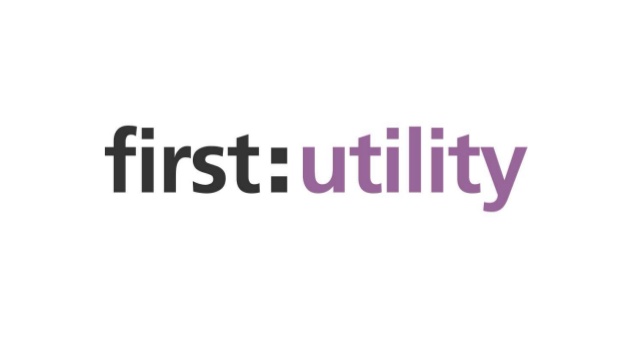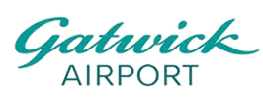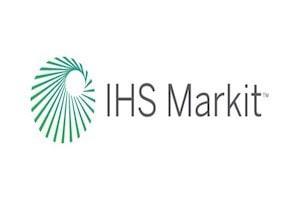You Ask, We Answer: NGINX Versus Apache, LiteSpeed, and Caddy — Which Web Server is Right for You?
Here at Sirius, we often get asked, “How does NGINX stack up against other leading web servers like Apache, LiteSpeed, and Caddy?” This is a very good question, and one that deserves a clear, honest answer. We understand the need to choose the right foundational technology, as this decision affects your scalability, resource costs, and operational agility for years to come. Comparisons are a fundamental part of the buying process.
We want to be upfront: NGINX is often the industry gold standard for high concurrency, but the truth is, due to major differences in underlying architecture and specialized feature sets, NGINX might not be the optimal fit for every application, particularly for legacy hosting or modern, highly automated microservices.
This article will honestly compare these leading web servers, explaining the architectural, performance, and operational factors that drive success in different environments. Our goal is to be fiercely transparent, allowing you to understand the trade-offs—from higher resource costs to dynamic configuration agility—and make the most informed decision possible for your specific needs.
The Foundational Comparison: Architecture and Resource Economics
The most critical difference among the top web servers is their core architectural model, which fundamentally dictates performance, resource utilization, and operational expenditure (OpEx).
1. Process-Driven (Synchronous) Model: Apache HTTP Server
Apache historically relies on a process-driven, synchronous architecture, typically employing Multi-Processing Modules (MPM) to manage connections.
Operation: Apache generally spawns a new process or thread for each incoming connection request.
Trade-off: While this model guarantees resource isolation and stability, its synchronous nature demands higher consumption of system resources (CPU and memory) under heavy traffic loads because resources are duplicated for every sustained connection.
Cost Implication: Selecting Apache for massive concurrency typically implies greater infrastructure expense in cloud environments, as operational costs scale directly with the higher resource utilization per connection. Apache is best suited for legacy applications and projects demanding maximum flexibility and compatibility.
2. Event-Driven (Asynchronous) Model: NGINX, LiteSpeed, and Caddy
NGINX, LiteSpeed, and Caddy all utilize an event-driven, non-blocking architecture.
Operation: A single worker thread manages numerous concurrent connections through asynchronous callbacks, enabling handling of thousands of requests simultaneously with minimal blocking.
Trade-off: This model is exceptionally efficient, translating into a lower memory footprint and superior handling of concurrent connections.
Cost Implication: The high efficiency of these servers results in substantially lower operational expenditures (OpEx) for organizations managing high-traffic web applications in cloud or resource-constrained environments.
| Technology | Core Architecture | Primary Resource Trade-off | Market Share (Estimated Range) |
|---|---|---|---|
| NGINX | Event-Driven (Asynchronous) | High concurrency, low resource use | 33% - 39% |
| Apache HTTP Server | Process-Driven (Synchronous/MPM) | High flexibility, higher resource overhead | 25% - 36% |
| LiteSpeed | Event-Driven (Asynchronous) | High performance, Apache compatibility | 12% - 15% |
| Caddy | Event-Driven (Asynchronous) | Simplicity, automation, modern defaults | 0.3% - 1% (Rapidly growing) |
Performance Trade-offs: Static vs. Dynamic Content
While NGINX, LiteSpeed, and Caddy share the efficient event-driven model, their optimization focus differs, creating clear winners for specific workloads.
Static Content Delivery: NGINX is widely considered the industry champion for efficiently serving static assets (images, CSS, JavaScript). Its low-overhead design and mature ecosystem make it unrivaled in this role.
Dynamic Content Processing: LiteSpeed Web Server (LSWS) excels where NGINX is often just a facilitator. For applications built on PHP, LiteSpeed is designed for dramatically faster dynamic content processing. This performance edge is strongly linked to its exclusive, integrated LSCache technology, which provides automated, deep application-level caching that NGINX cannot natively match (NGINX typically relies on third-party cache modules). For high-traffic Content Management Systems (CMS) like WordPress or e-commerce platforms, LiteSpeed often holds a specialized advantage.
Hybrid Strategy: For organizations seeking maximum performance, the highest performing architectures often utilize a hybrid approach: deploying NGINX at the edge as a reverse proxy for high-concurrency tasks (SSL termination, static delivery) and passing dynamic requests upstream to a specialized server like Apache or LiteSpeed for processing.
Modern Agility and Security Automation
In the context of containerized environments and infrastructure-as-code, two servers stand out for their native support of modern web standards and automation features.
1. HTTP/3 (QUIC) Protocol Support
The ability to use the newest HTTP/3 protocol is essential for performance gains, particularly over unstable networks.
Leaders: Caddy (since v2.6+) and LiteSpeed (since v5.4+) both offer full, stable support for HTTP/3.
Laggard: NGINX Open Source currently offers only experimental HTTP/3 support (v1.25+), often requiring specialized builds. Apache maintains no native HTTP/3 support and has no publicly available integration plans.
2. Configuration and Dynamic Reconfiguration
Configuration complexity and the ability to update settings without service interruption heavily influence operational cost (TCO).
Caddy (The Agility Champion): Caddy’s core strength is simplicity and automation. Its streamlined configuration file (Caddyfile) can be managed via a native JSON/RESTful admin API. This design ensures that configuration reloads are atomic and hitless (without interrupting running services), making Caddy superior for rapidly changing microservice environments (Kubernetes/Docker).
NGINX (The Feature Lock): NGINX Open Source typically requires a graceful configuration reload to apply changes. Essential agility features, such as dynamic reconfiguration of upstream servers and accessing the admin API, are explicitly restricted to the commercial NGINX Plus version.
Automatic HTTPS: Caddy significantly reduces operational overhead by providing built-in automatic HTTPS (TLS certificates via Let's Encrypt) by default, requiring only a few lines of configuration. NGINX and Apache require manual setup or integration with external tools like Certbot, incurring a higher maintenance cost.
Strategic Use Case Mapping
The optimal choice depends entirely on the specific application workload, operational priorities, and risk tolerance.
| Scenario/Requirement | NGINX (Recommended) | LiteSpeed (Recommended) | Caddy (Recommended) | Apache (Recommended) |
|---|---|---|---|---|
| High-Traffic Reverse Proxy | Primary Choice | Good | Good for simple setups | Not Ideal |
| Static Asset Delivery | Primary Choice (Highest Performance) | Excellent | Excellent | Moderate |
| Microservices/API Gateway | Excellent (Granular Control) | Good | Primary Choice (Automation/Simplicity) | Not Ideal |
| High-Performance PHP/CMS | Good (If paired with fast-CGI) | Primary Choice (LSCache Advantage) | Good | Moderate |
| Legacy Apps/Decentralized Config | Moderate | Good (Apache-Compatible) | Moderate | Primary Choice (Modularity/.htaccess) |
Conclusion: Finding the Right Balance
The comparison highlights that the four web servers balance four key risks: the higher resource Cost associated with Apache, the advanced Complexity of configuring NGINX for peak performance, the perceived Maturity risk associated with Caddy’s newer ecosystem, and the Licensing constraints imposed by NGINX Plus and LiteSpeed Enterprise to unlock crucial agility features.
We encourage you to perform due diligence, asking yourself whether your primary need is:
Raw Performance and Static Delivery (NGINX): Choose NGINX if you need the highest throughput and concurrency for unchanging workloads, accepting that advanced dynamic configuration features require the proprietary NGINX Plus license.
Application Optimization (LiteSpeed): Choose LiteSpeed if your dynamic PHP/CMS applications require superior out-of-the-box performance and caching integration.
Security Automation and Agility (Caddy): Choose Caddy if you prioritize native automatic HTTPS, atomic dynamic reconfigurations, and simplicity for microservices or containerized deployments.
Compatibility and Modularity (Apache): Choose Apache if backward compatibility or the ability to utilize decentralized .htaccess configuration overrides is a core requirement.
















































